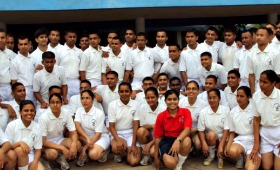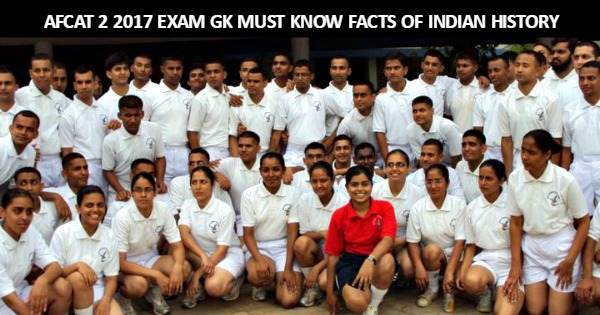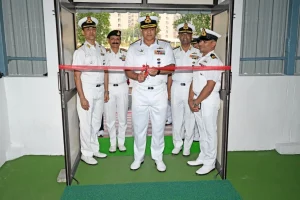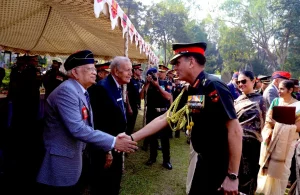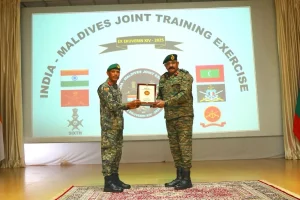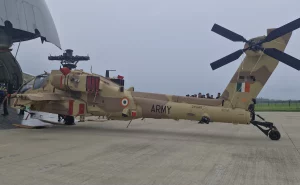General Knowledge comprises of the toughest part of AFCAT exam for that matter. In GK candidates are asked about the recent happenings (of around a period of one to one and a half year). Questions are asked from Politics, Geography, History, Science, Economy etc. You need to have a good understanding of the basics. In this article we will discuss some Important Facts of Indian History.
AFCAT 2 2017 Exam GK Must Know Facts of Indian History
- Made in the times of Bhoj, an idol of ‘Vakdevi’ is at present preserved in the British Museum.
- The Jain temples of Dilwara were constructed during the period of Parmars.
- In Udaipur Prashasti, Munj is entitled ‘Kavi Vrish’ due to his literary attainments.
- Qutubuddin was purchased as a slave in his childhood by Qazi Fakruddin Abdul Aziz Koofi.
- Qutubuddin did not issue coins or got ‘Khutba’ read in his name after accession to Delhi throne.
- Qutubuddin Aibak was buried at Lahore after his death.
- Iltutmish established the Shamsi dynasty.
- Iltutmish organized the group of his 40 slaves which is famous in history as Turkan-i-Chahalgami.
- Yalduz and Nasiruddin Qubacha were prominent rivals of Iltutmish.
- According to Barni, Balban organized his Court on the Iranian pattern.
- Balban started the system of ‘Sijda’ and ‘Paibos’ during his reign.
- Balban’s theory of kingship was based upon—Power, Prestige and Justice. His main objective was to maintain his control upon the administrative officials.
- The Mongol leader Changez Khan was known as the ‘Curse of God’.
- The coronation of Jalaluddin Feroz Shah was done in 1290 at the Kilokhari Apurna Palace built by Kaikubad.
- At the time of his accession on the Delhi Sultanate, Alauddin Khalji assumed the title of Abul Mujaffar Sultan Alauddinia and Deen Mohammad Shah Khalji.
- Jalaluddin Feroz Shah Khalji granted to Alauddin Khalji, the post of Amir-i-Tujuk.
- During Alauddin’s time approximately 75 to 80 per cent of the peasant’s produce was charged as tax.
- The main tasks of Diwan-i-Ariz were to recruit the soldiers, to disburse the salary, to well equip the army, to make arrangements for inspection and to proceed with the Commander-in-Chief in times of war.
- The main tasks of the Diwan-i-Insha was to draft royal orders and letters and to maintain the govt. records. He also conducted correspondence with the local officers.
- Alauddin Khalji introduced market reforms and fixed the prices of various items and goods.
- Shivaji was the founder of Maratha State. He fought against the state of Deccan, as well as the mughal empire. He was a great administrator.
- Shivaji was succeeded by Sambhaji who was captured and put to death by Aurangzeb.
- Rajaram ruled only as the representative of Shahu—the son of Shambhaji who was imprisoned by Aurangzeb. Rajaram never occupied the Maratha throne.
- After the death of Raja Ram Maratha war of independence was carried on by his wife Tarabai.
- VascodeGama came to India as the representative of the ruler of Portugal. He met Zamorin of Calicut and obtained trade facilities.
- In 1492 Pope Alexander VI granted the Portuguese the monopoly to trade with the east.
- From 1505 to 1509, Almeda remained in India as the first Portuguese Governor.
- Albukirk was the successor of Almeda in India. His objective was to establish a Portuguese colony in India by intermarrying with Indians.
- After coming to India, the Dutch established their trade centres at Surat, Bharaunch, Cambay, Ahmedabad, Chinsura, Kasim Bazar, Patna, Balasore, Nagapattanam, Kochin, Masulipattanam and Agra.
- The main aim of the Dutch was to trade with the Islands of south-east Asia. India was just a passage for them. This is why the Dutch faced no rivalry with other European companies.
- In 1608, under the leadership of Captain Hawkins, the English fleet reached India.
- In 1717 the Mughal King Farrukh Siyar granted a Firman to the British giving them the trade rights.
- In 1692, the Nawab of Bengal issued an order to the French Company and they established a commercial Factory at Chandranagar.
- In Akbar’s time, the clerk was called Karkun. His main task was to record the cultivable land in the Pargana and keep an account of the realized and unrealized revenue.
- Akabar introduced Mansabdari system with its ranks of Jat and Sawar based on decimal system.
- According to Blochman, Zat was the definite number of soldiers, the Mansabdars had to keep with them.
- According to Blochman the Sawar meant the definite number of cavalry.
- In Akbar’s time, there were four kinds of land—Polaj, Chacher, Parauti and Banjar.
- In Akbar’s time, Ibrahim Sarhindi translated the Sanskrit text of Atharva Ved in Persian.
- Mulla Shah Mohammad translated in Persian Raj Tarangini of Kalhan.
- Maulana Sherry translated Hari Vansh Puran in Persian.
- Abul Fazal translated Panch Tantra in Persian.
- Faizi translated the story of Nal Damayanti in Persian.
- The history of Islam was compiled in Tarikh-i-Alfi. It is a famous book.
- Akbar established a separate department of Painting, the chairman of this department was the famous painter Khwaja Abdus Samad.
- Abdussamad was an inhabitant of Persia who came to India from Shiraz. He was adorned with the title of Shirin Qalam for his attainments.
- Mohammad Hussain, the famous author of Akbar’s Court was adorned with the title of Zari Qalam.
- Akbar built the Fort of Allahabad.
- The first building of Akbar’s time was Humayun’s tomb at Delhi built under the guidance of his step mother Haji Begum.
- The main mason who built Humayun’s tomb belonged to Iran and his name was Mirza Meerak Ghyas.
- Akbar was born on Sunday. Hence Jahangir declared Sunday as a pious day.
- Nur Jahan was an educated lady. She was specially interested in music, painting and poetry. She composed poetry in Persian.
- The first Englishman to come to the Mughal Court was captain Hawkins.
